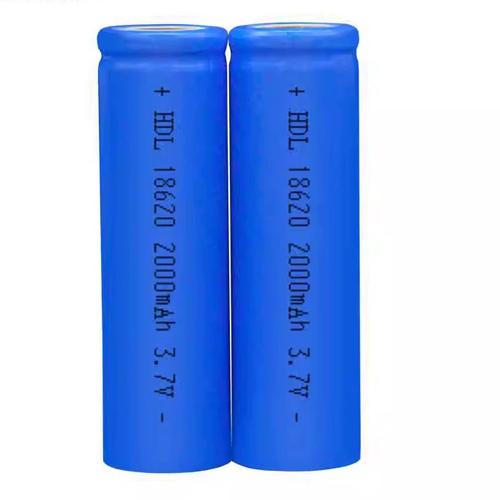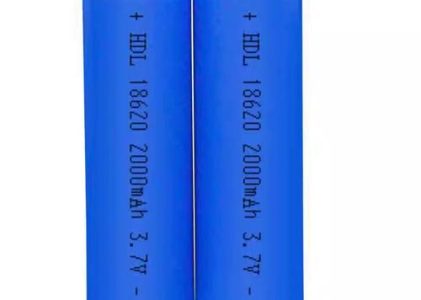How to calculate the capacity of lithium-ion batteries
The capacity of lithium-ion batteries is an important indicator for measuring their performance, usually measured in milliampere hours (mAh) or ampere hours (Ah). Here are several methods for calculating the capacity of lithium-ion batteries:
Method 1: Calculation based on rated current and usage time
Formula: Capacity (mAh)=Rated current (mA) x Usage time (hours).
one
Example: If a lithium battery has a rated current of 1000mA and a usage time of 2 hours, its capacity can be calculated as: Capacity=1000mA × 2 hours=2000mAh.
Attention: This method is calculated at the rated current of the battery. In practical use, if there are changes in current or different operating temperatures of the battery, the capacity may deviate.
Method 2: Calculation based on battery stored energy and voltage
Steps:
Firstly, determine the voltage V (volts) of the battery.
two
three
The energy stored in the battery, W (joules), can be obtained by multiplying the voltage of the battery by its current (unit: ampere A). The formula is: W=V × I.
Finally, the capacity Ah of the battery is obtained by dividing the energy W by the discharge time (in hours h). The formula is: Ah=W/(h × V).
Example: Suppose there is a lithium-ion battery with a voltage of 3.7V, a current of 10A passing through the battery, and a duration of 1 hour. So we can calculate:
The energy stored in the battery is W=3.7V × 10A=37Wh.
Battery capacity: Ah=37Wh/(1 hour x 3.7V) ≈ 10Ah.
Factors affecting the capacity of lithium batteries
Current variation: In actual use, if there is a change in current, the capacity of the battery may deviate.
Working temperature: The working temperature of a battery can also affect its capacity.
Battery aging: With the use and passage of time, the capacity of the battery will gradually decrease.
four
Battery type: The capacity of different types of lithium-ion batteries (such as lithium iron phosphate batteries, lithium cobalt oxide batteries, etc.) will also vary.
In summary, when calculating the capacity of lithium-ion batteries, appropriate methods can be selected based on the actual situation, and factors such as current, temperature, and battery aging can be considered to affect the capacity.
———————-
如何计算锂离子电池容量
锂离子电池的容量是衡量其性能的重要指标,通常以毫安时(mAh)或安时(Ah)为单位。以下是计算锂离子电池容量的几种方法:
方法一:基于额定电流和使用时间的计算
公式:容量(mAh) = 额定电流(mA) × 使用时间(小时)。
1
示例:如果一个锂电池的额定电流为1000mA,使用时间为2小时,那么它的容量可以计算为:容量 = 1000mA × 2小时 = 2000mAh。
注意事项:此方法是在电池的额定电流下进行计算的。实际使用中,如果电流有变化或者电池的工作温度不同,容量可能会有所偏差。
方法二:基于电池储存能量和电压的计算
步骤:
首先确定电池的电压V(伏特)。
2
3
用电池的电压乘以电池的电流(单位:安A),就可以得到电池储存的能量W(焦耳)。公式为:W = V × I。
最后用能量W除以放电时间(小时h),就得到了电池的容量Ah。公式为:Ah = W / (h × V)。
示例:假设有一个锂离子电池,其电压为3.7V,通过该电池的电流为10A,持续时间为1小时。那么可以计算得到:
电池储存的能量:W = 3.7V × 10A = 37Wh。
电池容量:Ah = 37Wh / (1小时 × 3.7V) ≈ 10Ah。
锂电池容量的影响因素
电流变化:实际使用中,如果电流有变化,电池的容量可能会有所偏差。
工作温度:电池的工作温度也会影响其容量。
电池老化:随着电池的使用和时间的推移,电池的容量会逐渐降低。
4
电池类型:不同类型的锂离子电池(如磷酸铁锂电池、钴酸锂电池等)其容量也会有所不同。
综上所述,计算锂离子电池容量时,可以根据实际情况选择合适的方法,并考虑电流、温度、电池老化等因素对容量的影响。


